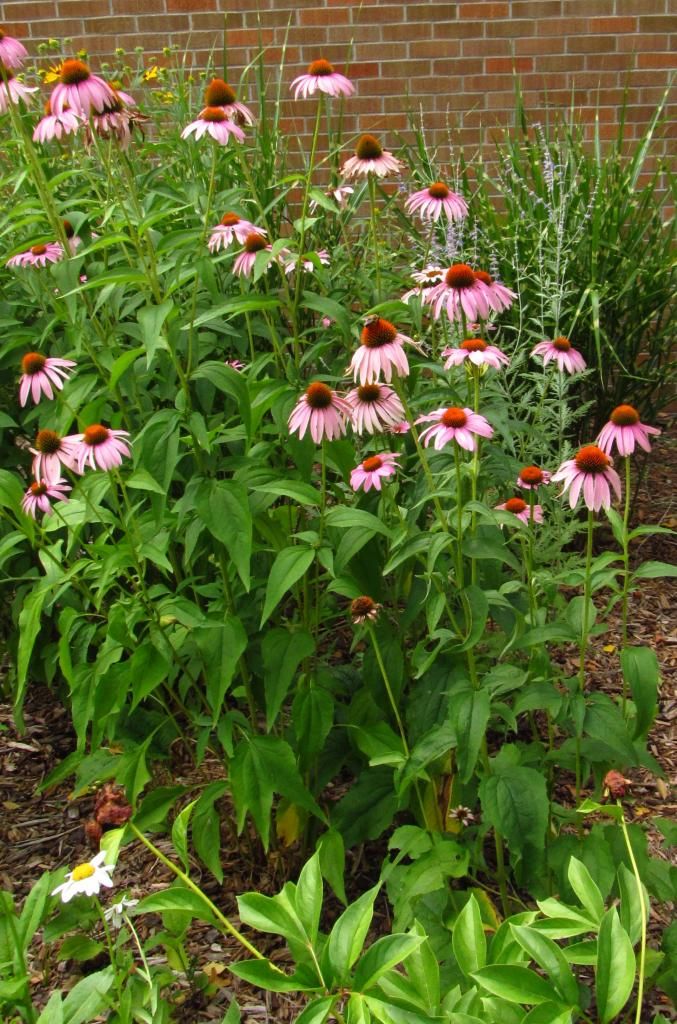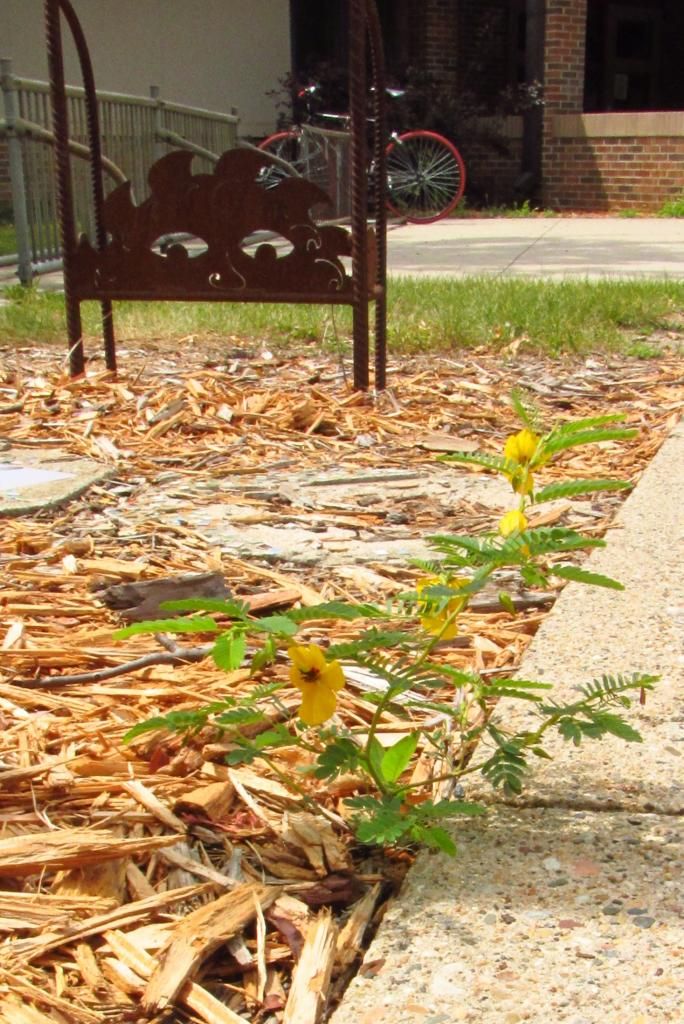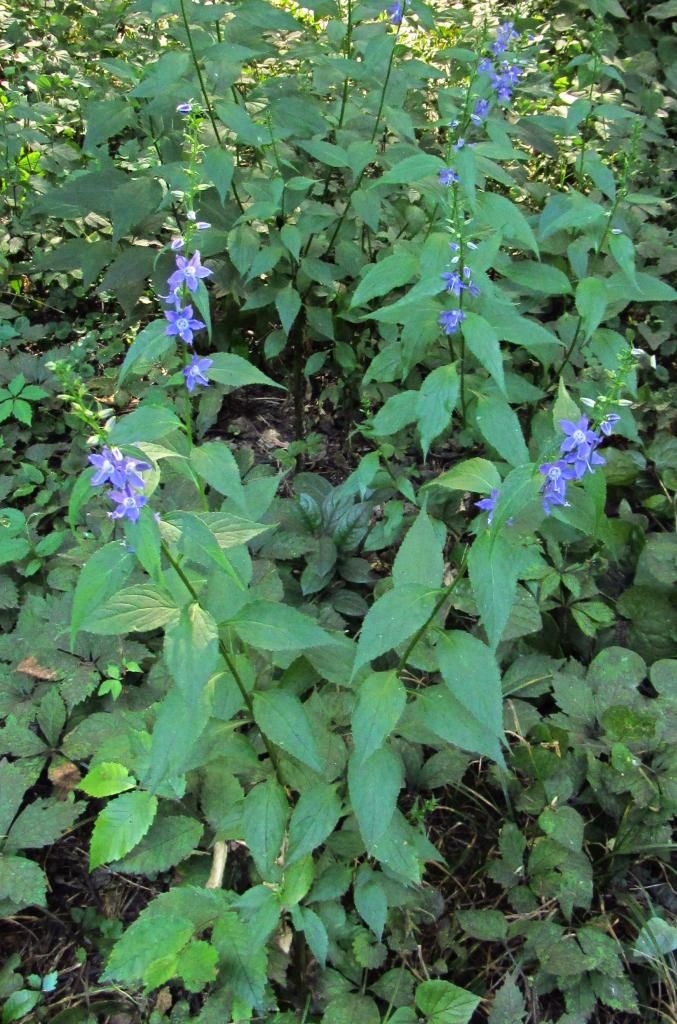Today’s featured wildflower is blooming not only in prairies all over Iowa now, but also in many gardens. In fact, I took the enclosed photos of purple coneflowers at Clive Elementary School in Windsor Heights, my alma mater and the site of the 2004 and 2008 Iowa caucuses for my precinct. If you’re into natural or herbal remedies, you may recognize this plant’s scientific name: Echinacea purpurea.
Several photos of purple coneflowers are after the jump. As a bonus, I’ve included recent pictures of two other summer wildflowers Bleeding Heartland featured last summer: partridge pea and American bellflower. They are among my favorite Iowa native plants. Keep an eye out for them along bike trails.
This is an open thread: all topics welcome.
Commonly known as Purple coneflower or Eastern purple coneflower, Echinacea purpurea is found in 28 states and is one of the most easily recognized plants in the Aster family. Like other asters, what appear to be petals are ray flowers, and the disk in the center is filled with tiny flowers. This description comes from Wildflowers of the Tallgrass Prairie by Sylvan Runkel and Dean Roosa:
The flower head has 12 to 20 spreading or drooping, purple, petal-like rays. Rays occasionally vary from purple to crimson and rarely are pale. Each ray is 1 1/2 to 3 inches long. The center cone is more dome-shaped than cone-shaped, an it is rough and prickly to the touch. The entire flower may be 3 to 3 1/2 inches across.
The plants usually grow from two to four feet tall.
In this top view, you can see some flower heads that haven’t opened up yet below the blossoming coneflowers.
The Lady Bird Johnson Wildflower Center website includes this information about Echinacea purpurea:
The genus name is from the Greek echino, meaning hedgehog, an allusion to the spiny, brownish central disk. The flowers of Echinacea species are used to make an extremely popular herbal tea, purported to help strengthen the immune system; an extract is also available in tablet or liquid form in pharmacies and health food stores. Often cultivated, Purple Coneflower is a showy, easily grown garden plant.
Here’s another shot of the flower bed in front of Clive Elementary School. I hope some Bleeding Heartland reader can tell me what those flowers are in the background. I have trouble telling the yellow asters apart.
Sylvan and Roosa write that native Americans and early doctors used purple coneflower to cure various ailments, and echinacea is frequently sold as a cold remedy, especially in health food stories. Scientific research supports some claims about this plant’s immunological properties. From the University of Maryland Medical Center website:
Echinacea contains several chemicals that play a role in its therapeutic effects. These include polysaccharides, glycoproteins, alkamides, volatile oils, and flavonoids.
The chemicals contained in the root differ considerably from those in the upper part of the plant. For example, the roots have high concentrations of volatile oils (odorous compounds) while the above-ground parts of the plant tend to contain more polysaccharides (substances known to trigger the activity of the immune system). The combination of these active substances is responsible for echinacea’s beneficial effects, though research suggests that the above ground portion of Echinacea purpurea is the most effective.
In Germany (where herbs are regulated by the government), the above-ground parts of Echinacea purpurea are approved to treat colds, upper respiratory tract infections, urinary tract infections, and slow healing wounds.
In front of the same elementary school, I was surprised to see a lone partridge pea plant growing next to the sidewalk. Typically partridge pea grows in larger colonies. Last year’s diary about this wildflower showed some examples.
Finally, here’s that shot of American bellflowers blooming in Windsor Heights this week. I love these plants.






1 Comment
P. coneflower
Purple coneflower is found in only a few wild sites in Iowa, where it likes woodland edges and prairie remnants. The rest of the vast numbers of purple coneflowers we see across Iowa are the result of humans moving this species around. As a wild indigenous plant, it is “rare in southeast and south central Iowa.” As a beloved garden plant, it’s everywhere.
PrairieFan Wed 3 May 7:46 PM